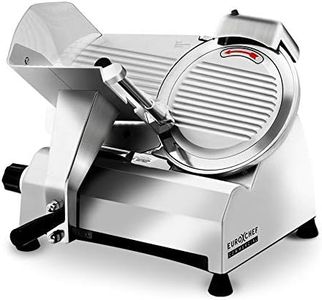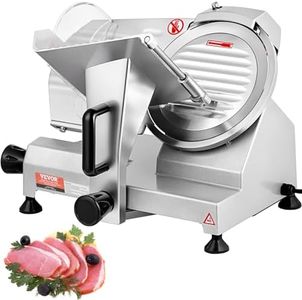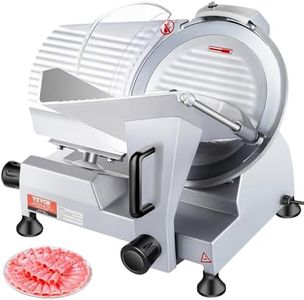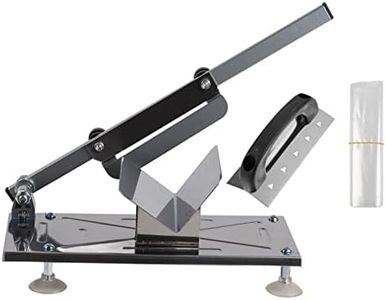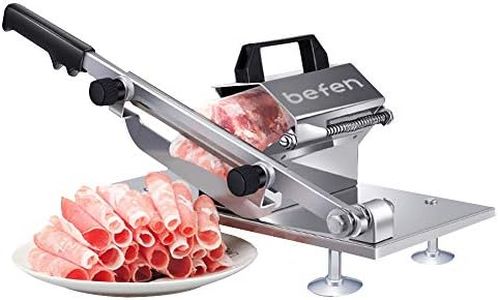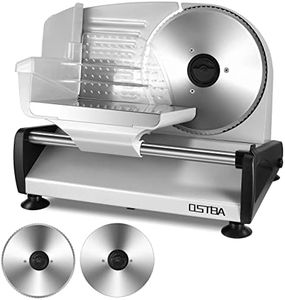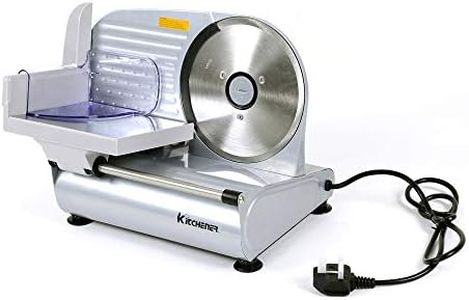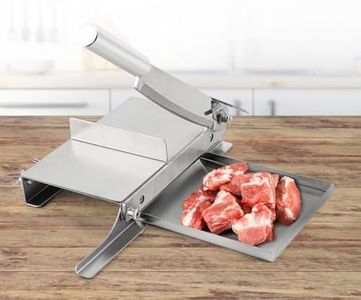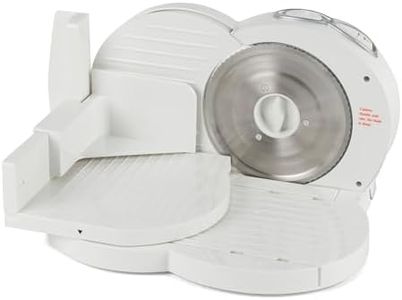We Use CookiesWe use cookies to enhance the security, performance,
functionality and for analytical and promotional activities. By continuing to browse this site you
are agreeing to our privacy policy
10 Best Meat Slicer For Frozen Meat
From leading brands and best sellers available on the web.Buying Guide for the Best Meat Slicer For Frozen Meat
Choosing a meat slicer for frozen meat can make food preparation much easier and more efficient, whether you’re prepping for a big family gathering or simply want to slice meat with precision for everyday meals. When shopping for the best meat slicer for frozen meat, you’ll need to focus on certain key features that address the unique challenges of slicing through firm, icy meat. Understanding these specifications will help you find a slicer that matches your specific needs and ensures safety and ease of use.Blade Type and MaterialThe blade is the heart of any meat slicer, and its material and design matter a lot, especially for frozen meat. Stainless steel blades are common, as they resist rust and maintain sharpness. Some blades are serrated (with teeth) while others are smooth. For frozen meat, a serrated blade is often preferred because it can grip and cut through tough, icy surfaces more effectively than a smooth one. When deciding, consider how often you’ll use it for frozen items; frequent use calls for a strong, serrated stainless steel blade.
Motor PowerMotor power, usually measured in watts, determines how easily and efficiently your slicer can handle tougher jobs like slicing frozen meat. Slicers with lower power (typically under 150 watts) are better suited for deli meats and cheeses, but may struggle with frozen products. Mid-range (150–250 watts) are more versatile, but if you frequently slice through thick, frozen cuts, a powerful motor over 250 watts is ideal. Your main consideration should be how often and how much frozen meat you intend to slice; infrequent, small jobs can cope with less, but higher wattage means faster, smoother operation for larger tasks.
Thickness ControlThis feature lets you adjust the thickness of your slices—important if you want everything from wafer-thin to chunky cuts. Some slicers offer fine increments, while others have simpler, broader settings. Think about your cooking or presentation needs: do you want precise, adjustable slices for different dishes, or do you mainly need thick cuts for stews or stir-fries? The more variety you want, the more precise control you’ll need.
Build Quality and StabilitySince slicing frozen meat requires more force, the slicer’s build quality and sturdiness are critical for safety and performance. Models with heavy, solid bases and non-slip feet provide greater stability during operation and reduce the risk of accidents. If you plan to slice heavy or very icy meat, a sturdier, heavier model is worth considering. For lighter use, a simpler, lighter slicer might be sufficient and easier to move or store.
Ease of CleaningCleaning is crucial for hygiene, and frozen meats can leave behind stubborn residue. Some slicers have removable blades and food trays, which make cleanup much easier. If you’ll be using your slicer often, look for models that allow you to easily take apart parts for washing. If quick cleanup is a priority for you, this feature can make a big difference in how satisfied you’ll be with your slicer over time.
Safety FeaturesCutting frozen meat isn’t just tough on machines—it can also be risky for you. Look for safety additions like blade guards, non-slip feet, and safety locks. These help prevent accidental contact with the blade and keep the slicer steady. If you have children in your household, or if you’re new to using a slicer, robust safety features should be a priority.

